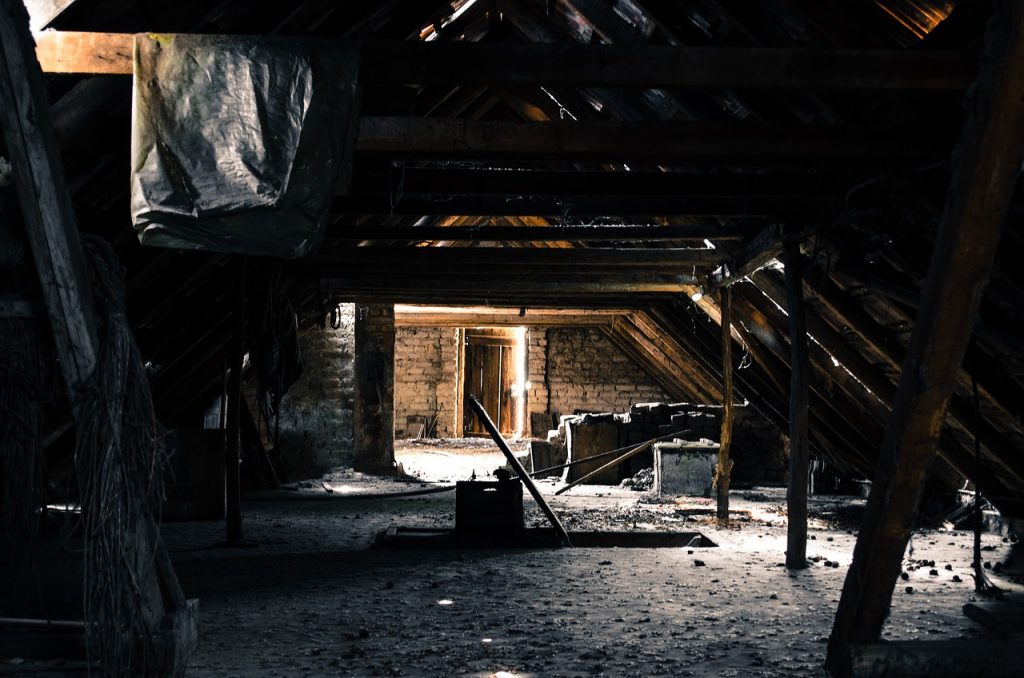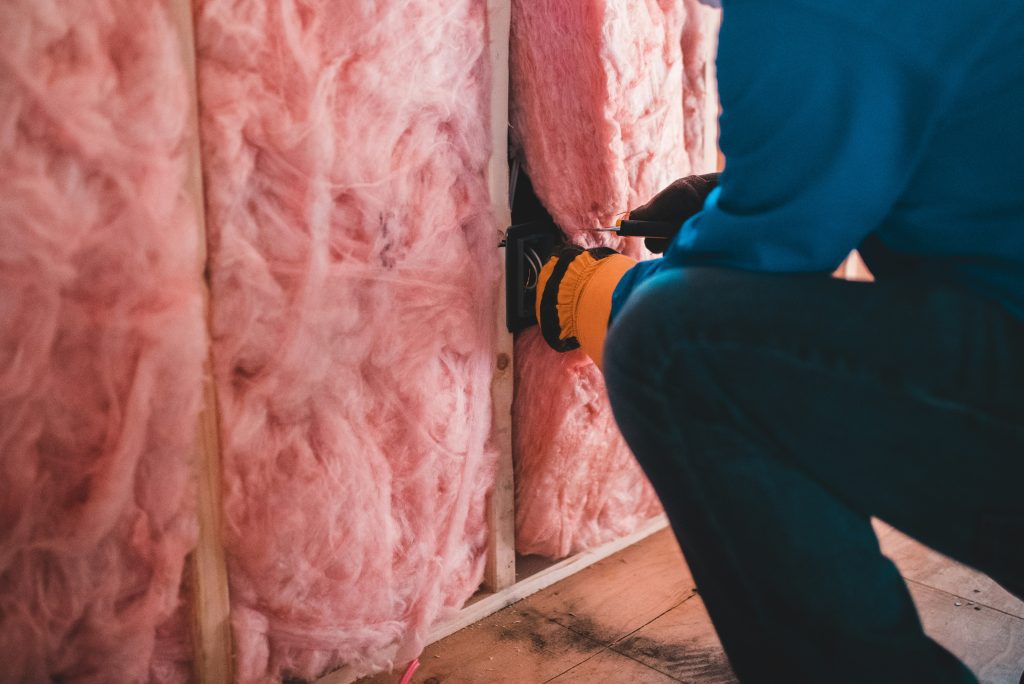Loft insulation plays a crucial role in maintaining a comfortable and energy-efficient home. Without proper insulation, a significant amount of heat can escape through the loft, leading to increased energy bills and a less comfortable living environment. During the winter months, heat rises and can easily escape through an uninsulated or poorly insulated loft, causing the heating system to work harder to maintain a comfortable temperature.
Conversely, in the summer, a poorly insulated loft can allow heat to penetrate the home, making it more difficult and expensive to cool the living space. Proper loft insulation helps to create a thermal barrier that prevents heat transfer, keeping the indoor temperature stable and reducing the workload on heating and cooling systems. This not only leads to lower energy bills but also reduces the carbon footprint of the home.
Additionally, loft insulation can help prevent moisture build-up, which can lead to mould and mildew growth, as well as damage to the structure of the home. Overall, investing in quality loft insulation is essential for creating a more energy-efficient and comfortable living environment. Choosing the Right Eco-Friendly Insulation Material
Selecting the right insulation material is crucial for creating an eco-friendly and energy-efficient home.
There are several eco-friendly insulation options available, each with its own unique benefits and considerations. One popular eco-friendly insulation material is recycled denim, which is made from post-industrial denim scraps and offers excellent thermal performance. Recycled denim insulation is free from harmful chemicals and is easy to install, making it a popular choice for environmentally conscious homeowners.
Another eco-friendly option is cellulose insulation, which is made from recycled paper products treated with fire-retardant chemicals. Cellulose insulation is an effective thermal insulator and offers excellent soundproofing properties as well. For those looking for a natural and sustainable option, sheep’s wool insulation is an excellent choice.
Sheep’s wool is a renewable resource that offers superior thermal performance and is naturally resistant to moisture and mould. Additionally, sheep’s wool insulation is non-toxic and biodegradable, making it an environmentally friendly choice for loft insulation. Another natural option is cork insulation, which is made from the bark of cork oak trees.
Cork insulation is a sustainable choice that offers excellent thermal performance and is resistant to mould, mildew, and pests. When choosing an eco-friendly insulation material, it is essential to consider factors such as thermal performance, sustainability, and environmental impact to make the best choice for your home.
Summary
- Proper attic insulation is crucial for maintaining energy efficiency in the home and reducing heating and cooling costs.
- Choose eco-friendly insulation materials such as recycled denim, wool, or cellulose to reduce environmental impact.
- Ensure proper installation techniques such as sealing gaps, using the right thickness of insulation, and avoiding compression for maximum energy efficiency.
- Seal air leaks and drafts in the attic to prevent heat loss and maintain a consistent temperature in the home.
- Regularly maintain and upgrade attic insulation to ensure long-term energy efficiency and cost savings.
- An eco-friendly home with proper attic insulation can lead to reduced energy consumption, lower utility bills, and a smaller carbon footprint.
- Taking steps towards a more energy efficient and eco-friendly home through proper attic insulation is essential for reducing environmental impact and saving money in the long run.
Proper Installation Techniques for Maximising Energy Efficiency
Proper installation of attic insulation is essential for maximising energy efficiency and ensuring optimal performance. Before installing insulation, it’s important to assess the attic space and address any existing issues such as air leaks, moisture problems, or inadequate ventilation. Proper ventilation is crucial for preventing moisture build-up and maintaining the effectiveness of the insulation.
Additionally, it’s important to seal any air leaks or drafts in the attic to prevent heat loss and maintain a consistent indoor temperature. When installing insulation, it’s important to follow manufacturer guidelines and recommendations for the specific type of insulation being used. Proper installation techniques will ensure that the insulation performs as intended and provides maximum energy efficiency.
It’s also important to consider factors such as the R-value of the insulation, which measures its thermal resistance. The higher the R-value, the better the insulation’s ability to resist heat transfer, so choosing insulation with a high R-value is essential for maximising energy efficiency. Proper installation also involves ensuring that the insulation is installed evenly and without any gaps or compression, which can reduce its effectiveness.
It’s important to pay attention to areas such as eaves, vents, and ductwork to ensure that they are properly insulated and sealed. By following proper installation techniques and addressing any potential issues in the attic space, homeowners can maximise energy efficiency and create a more comfortable living environment.
Sealing Air Leaks and Drafts in the Attic

Sealing air leaks and drafts in the attic is essential for maintaining energy efficiency and preventing heat loss. Air leaks can occur through gaps around pipes, ductwork, electrical wiring, and other penetrations in the attic space. Additionally, gaps around attic hatches, recessed lighting fixtures, and other openings can allow warm air to escape from the living space into the attic.
Sealing these air leaks with caulk or foam insulation can help prevent heat loss and improve the overall energy efficiency of the home. Another common source of air leaks in the attic is through gaps around chimneys, flues, and exhaust fans. These openings can allow warm air to escape from the home, leading to increased energy bills and reduced comfort.
Sealing these gaps with fire-resistant materials can help prevent heat loss while maintaining safety standards. Additionally, it’s important to ensure that attic insulation is properly installed around these openings to further reduce heat transfer. Properly sealing air leaks and drafts in the attic not only improves energy efficiency but also helps prevent moisture build-up and potential damage to the home’s structure.
By addressing these issues, homeowners can create a more comfortable living environment while reducing their carbon footprint and energy costs.
Maintaining and Upgrading Attic Insulation for Long-Term Energy Efficiency
| Metrics | Data |
|---|---|
| Initial Insulation R-Value | 10 |
| Recommended R-Value | 38 |
| Insulation Material | Fibreglass |
| Insulation Age | 10 years |
| Estimated Heat Loss | 25% |
| Cost of Upgrading | £1000 |
Maintaining and upgrading attic insulation is essential for long-term energy efficiency and comfort in the home. Over time, insulation can become compressed or settle, reducing its effectiveness and leading to increased energy bills. Additionally, insulation can become damaged by moisture or pests, further reducing its thermal performance.
Regular maintenance of attic insulation involves inspecting the insulation for signs of damage or compression and addressing any issues promptly. Upgrading attic insulation may be necessary if the existing insulation is outdated or no longer meets current energy efficiency standards. Upgrading to a higher R-value insulation or switching to a more eco-friendly material can significantly improve energy efficiency and comfort in the home.
When upgrading attic insulation, it’s important to consider factors such as local climate conditions, building codes, and recommended R-values for optimal thermal performance. In addition to maintaining and upgrading attic insulation, homeowners should also consider other factors that can impact energy efficiency in the attic space. Proper ventilation is crucial for preventing moisture build-up and maintaining the effectiveness of the insulation.
Additionally, addressing air leaks and drafts in the attic will further improve energy efficiency and comfort in the home. By taking a proactive approach to maintaining and upgrading attic insulation, homeowners can ensure long-term energy efficiency and create a more comfortable living environment.
The Benefits of an Eco-Friendly Home with Attic Insulation
Creating an eco-friendly home with proper attic insulation offers numerous benefits for homeowners and the environment. Eco-friendly insulation materials such as recycled denim, cellulose, sheep’s wool, and cork offer superior thermal performance while minimising environmental impact. By choosing eco-friendly insulation materials, homeowners can reduce their carbon footprint while creating a more comfortable living environment.
In addition to environmental benefits, an eco-friendly home with proper attic insulation also offers financial advantages. By reducing energy consumption through improved insulation, homeowners can lower their energy bills and save money in the long run. Additionally, eco-friendly homes are often more attractive to potential buyers and can command higher resale values.
Furthermore, creating an eco-friendly home with proper attic insulation contributes to a healthier indoor environment. Eco-friendly insulation materials are free from harmful chemicals and toxins, improving indoor air quality and reducing health risks for occupants. By investing in eco-friendly attic insulation, homeowners can enjoy a more comfortable, cost-effective, and environmentally responsible living space.
Taking Steps Towards a More Energy Efficient and Eco-Friendly Home

In conclusion, proper attic insulation is essential for creating a more energy-efficient and eco-friendly home. Understanding the importance of attic insulation and choosing the right eco-friendly material are crucial steps towards maximising energy efficiency and reducing environmental impact. Proper installation techniques, sealing air leaks and drafts, as well as maintaining and upgrading attic insulation are essential for long-term energy efficiency.
By creating an eco-friendly home with proper attic insulation, homeowners can enjoy numerous benefits including lower energy bills, improved comfort, reduced carbon footprint, higher resale value, and a healthier indoor environment. Taking steps towards a more energy-efficient and eco-friendly home not only benefits homeowners but also contributes to a more sustainable future for our planet. By investing in proper attic insulation and making environmentally conscious choices, homeowners can play a significant role in reducing energy consumption and protecting the environment for future generations.
If you’re looking to lower your heating costs, one of the best ways to do so is by improving your attic insulation. Proper attic insulation can significantly reduce the amount of heat that escapes from your home, leading to lower energy bills and a more comfortable living environment. By investing in high-quality insulation and ensuring that it is properly installed, you can make a big difference in your home’s energy efficiency.
FAQs
What is attic insulation?
Attic insulation is a material that is installed in the attic of a building to reduce heat transfer between the living space and the outside environment. It helps to maintain a comfortable indoor temperature and reduce energy costs.
How does attic insulation lower heating costs?
Attic insulation acts as a barrier to prevent heat from escaping through the roof of a building. By reducing heat loss, it helps to maintain a warmer indoor temperature, reducing the need for heating and lowering energy costs.
What are the benefits of attic insulation?
The benefits of attic insulation include lower heating costs, improved energy efficiency, increased comfort in the living space, and reduced environmental impact by lowering energy consumption.
What types of attic insulation are available?
Common types of attic insulation include fibreglass, cellulose, and spray foam. Each type has its own advantages and considerations, such as cost, R-value, and installation requirements.
How do I know if my attic needs insulation?
Signs that your attic may need insulation include uneven indoor temperatures, high energy bills, drafts or cold spots, and visible gaps or thin insulation in the attic.
How can I get attic insulation installed?
Attic insulation can be installed by a professional insulation contractor. They will assess your attic, recommend the appropriate type and amount of insulation, and carry out the installation according to industry standards.


